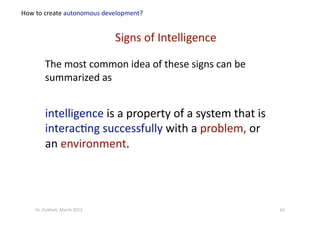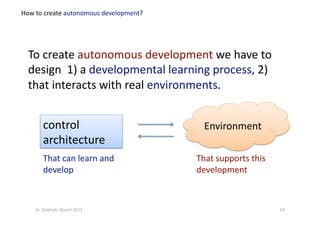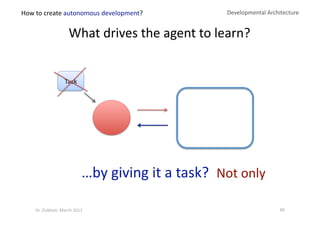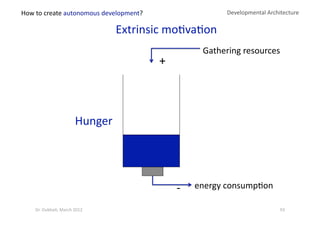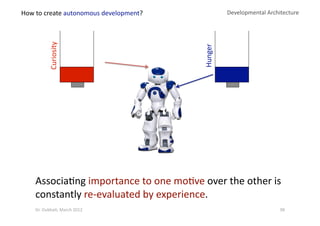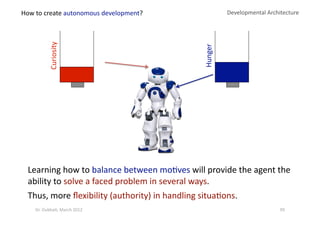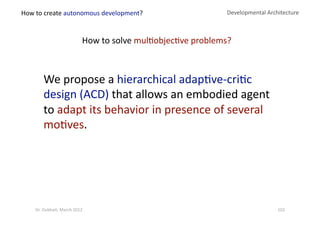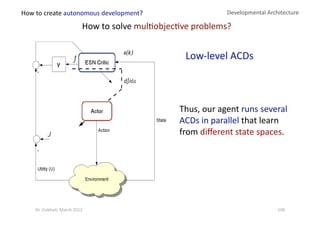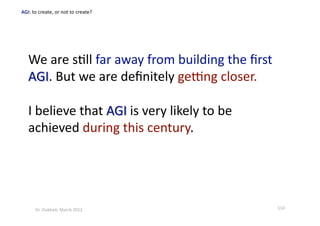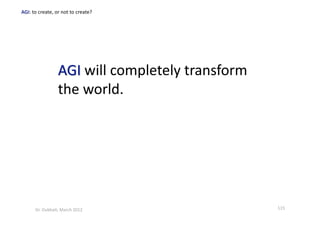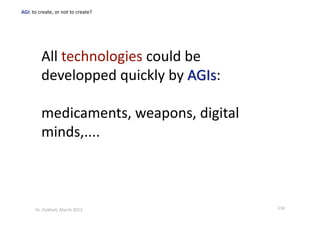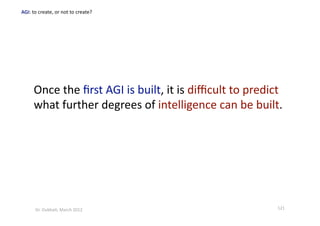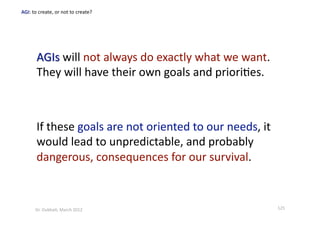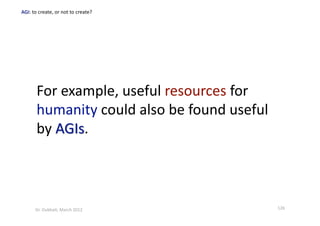The document discusses embodied intelligence and how brain, body and environment interact. It addresses whether human-like intelligence can be designed, noting that to do so requires understanding how intelligence works and having the tools to implement that understanding. The talk aims to discuss these two points. It explores definitions of intelligence and artificial intelligence, and the differences between conventional AI and artificial general intelligence (AGI), with most research focusing on conventional AI due to the risks of pursuing AGI. Child development processes are also discussed as a model for how a robot could learn like a child.
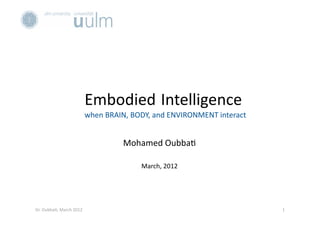
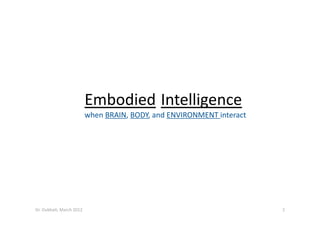

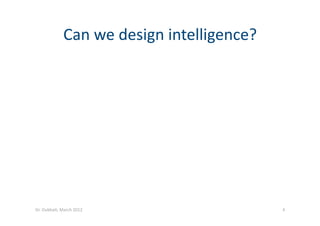

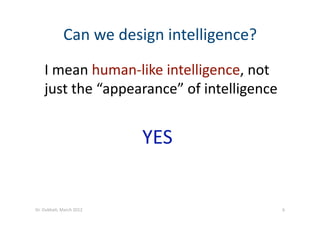

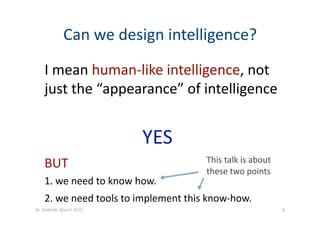


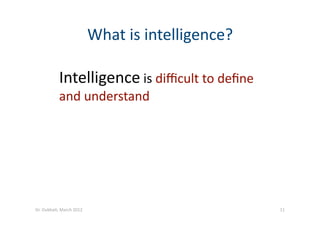

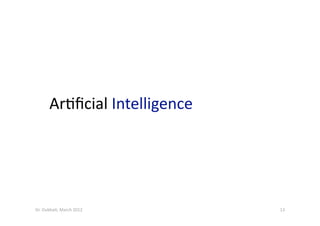


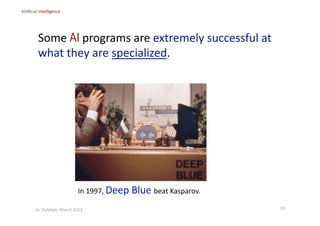
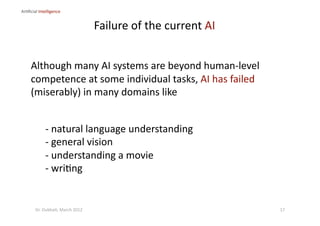


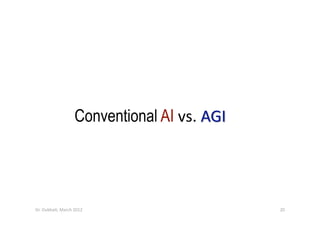


![Conventional A.I.
PROBLEM
SPACE
[Adapted
from
Dr.
Goertzel]
Conventional AI
vs.
AGI
23
Dr.
Oubba?,
March
2012](https://image.slidesharecdn.com/oubbatitalkmarch2012-151225115833/85/Mohamed-Oubbati-Embodied-Intelligence-23-320.jpg)

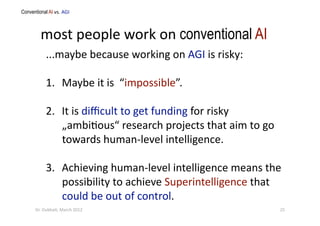
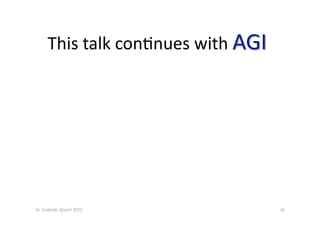


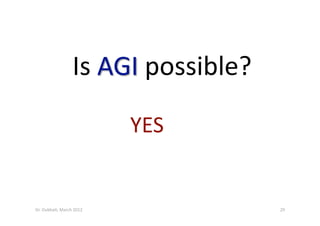






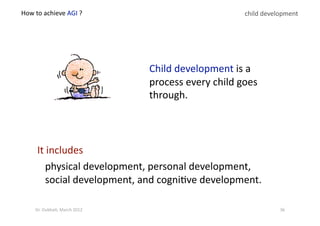
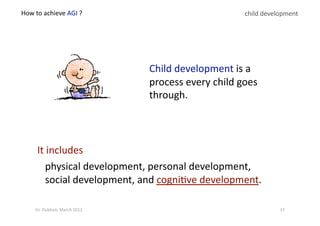
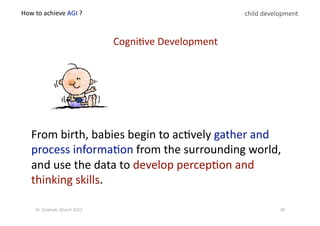


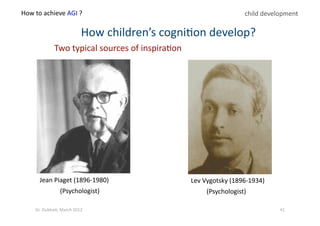






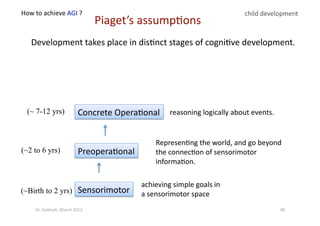
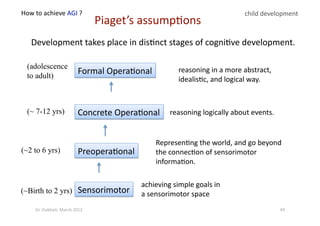






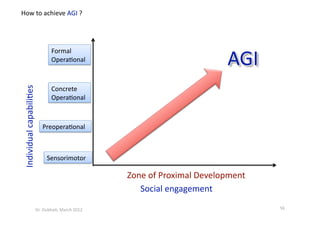



![• Learn
(understand)
from
experience.
• Use
reasoning
to
solve
problems.
• Adapt
quickly
and
successfully
to
new
situa?ons.
• Use
the
acquired
knowledge
to
manipulate
the
environment.
[R. J. Sternberg, editor. Handbook of Intelligence. Cambridge University Press, 2000.]
[U. Neisser, et. al., Intelligence: Knowns and unknowns. American Psychologist, 51(2):77–101, 1996.]
Signs
of
Intelligence
(possibly
their
are
many
other)
How
to
create
autonomous
development?
60
Dr.
Oubba?,
March
2012](https://image.slidesharecdn.com/oubbatitalkmarch2012-151225115833/85/Mohamed-Oubbati-Embodied-Intelligence-60-320.jpg)

